Truffle Hunting from Split?!? It is Time to Visit Dugopolje
April 14, 2023 - Did you also think that truffle hunting was only in Istria? Think again, and take a closer look at Dugopolje, where the motorway connects with Split.
One of the things I love about living in Croatia is finding out how much I do not know about the country despite living here for more than 20 years.
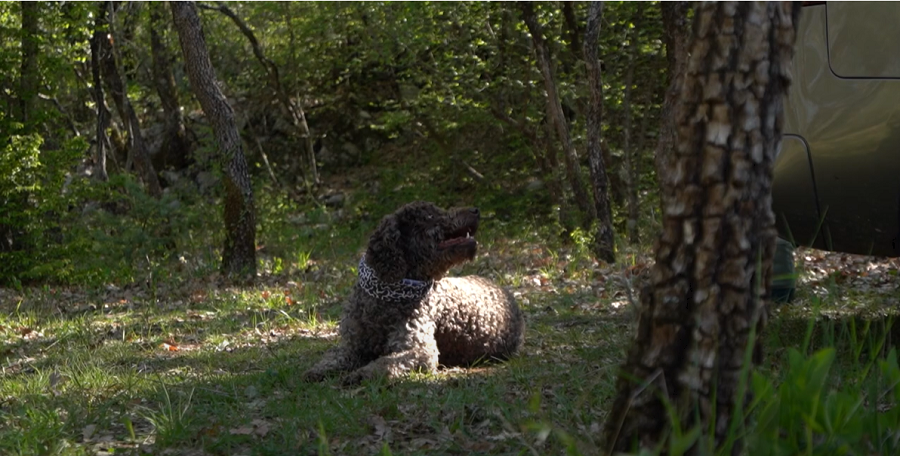
For the first 17 of them, for instance, I had always believed that the only truffle area in the country was Istria, the gourmet region that has made truffles a central part of its gourmet brand.
I was a little surprised a few years ago to learn from a friend on Korcula that there are truffles on the Peljesac Peninsula, but he refused to tell me exactly.
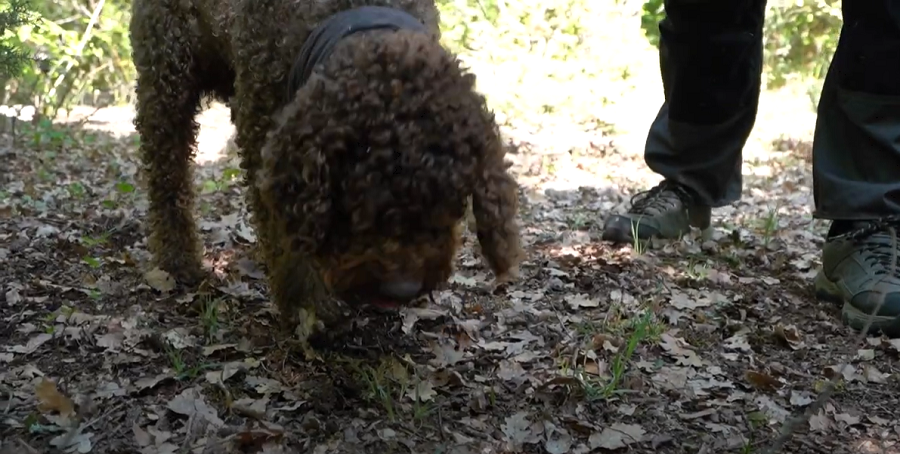
And then the big surprise, as the Zagreb County Tourist Board Director, Ivana Alilovic, invited me to go truffle hunting in the forests of Turopolje near Zagreb Airport. Truffles outside of Zagreb? Really?!?
Yes indeed, as you can learn in Move Over Istria: the Rise of Zagreb Truffle Hunt Tourism.
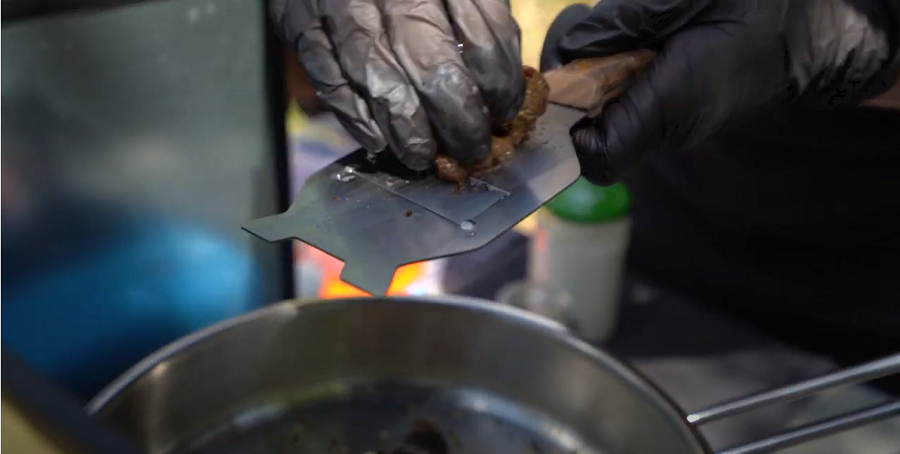
It was a fantastic day and one more example of authentic Croatian tourism that was somewhat under the radar.
And then I heard that there was truffle hunting in Lika. And then just outside Split. Really?!?

Dugopolje is perhaps best known as being the motorway connection to Split, as well as home to the huge retail park that flanks the approach road to the fast road to Zagreb, but it is quite an interesting little destination of its own, being a gateway between the Dalmatian capital and the truly unique inland Dalmatia. And if you like Dalmatian prsut, this is a great place to try the local stuff.
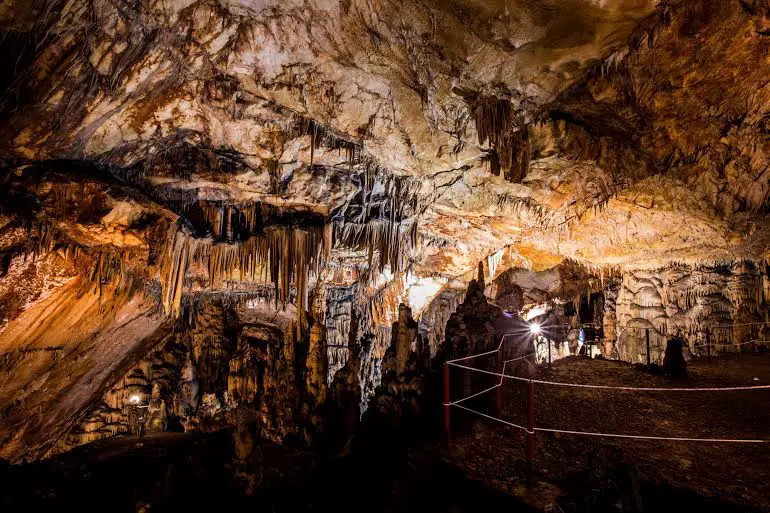
But yes, Dugopolje also offers truffle hunting, and the CROMADS team took in the experience a few months ago to discover a fabulous day trip from Split that is hardly known about. You can check out the experience video below, and if you plan to make the trip, having experienced the wonders of Dugopolje above ground with the truffle hunting dogs, time to meet Dugopolje's most spectacular attraction, the truly fabulous Vranjaca Cave. You can learn more about Vranjaca here.
****
You can subscribe to the Paul Bradbury Croatia Expert YouTube channel here.
What is it like to live in Croatia? An expat for 20 years, you can follow my series, 20 Ways Croatia Changed Me in 20 Years, starting at the beginning - Business and Dalmatia.
Follow Paul Bradbury on LinkedIn.
Croatia, a Survival Kit for Foreigners is now available on Amazon in paperback and on Kindle.

International Folklore Meetings Begin in Split-Dalmatia County!
July 14, 2022 - International Folklore Meetings is the name of a joint manifestation that has been organized for years in the cities and municipalities of Split-Dalmatia County by local folklore societies and cultural and artistic organizations.
The event is supported by their local self-government units, tourist boards, Split-Dalmatia County, and numerous sponsors and donors, and more recently by connecting with international folklore festivals in the Republic of Croatia under patronage of the International Association of Folklore Festivals and CIOFF groups.
The first initiative was given by KUD "Ante Zaninović" from Kaštel Kambelovac to organize a modest folklore evening called ˝Za jubav tance igraše˝ two decades ago. Soon after, KUD ˝Pleter˝ from Dugopolje joined the event by organizing a folklore evening aptly named ˝Ljepota u kamenu kamenitom“. A year later, KUD ˝Branimir 888˝ from Muć connected their traditional folklore event "The old chest is open" to the meetings. Finally, seven summers ago, KUD ˝Dalmatia˝ from Dugi Rat joined the international folklore meetings with its folklore ceremony called "Kolo, kolo, kolajna od zlata."
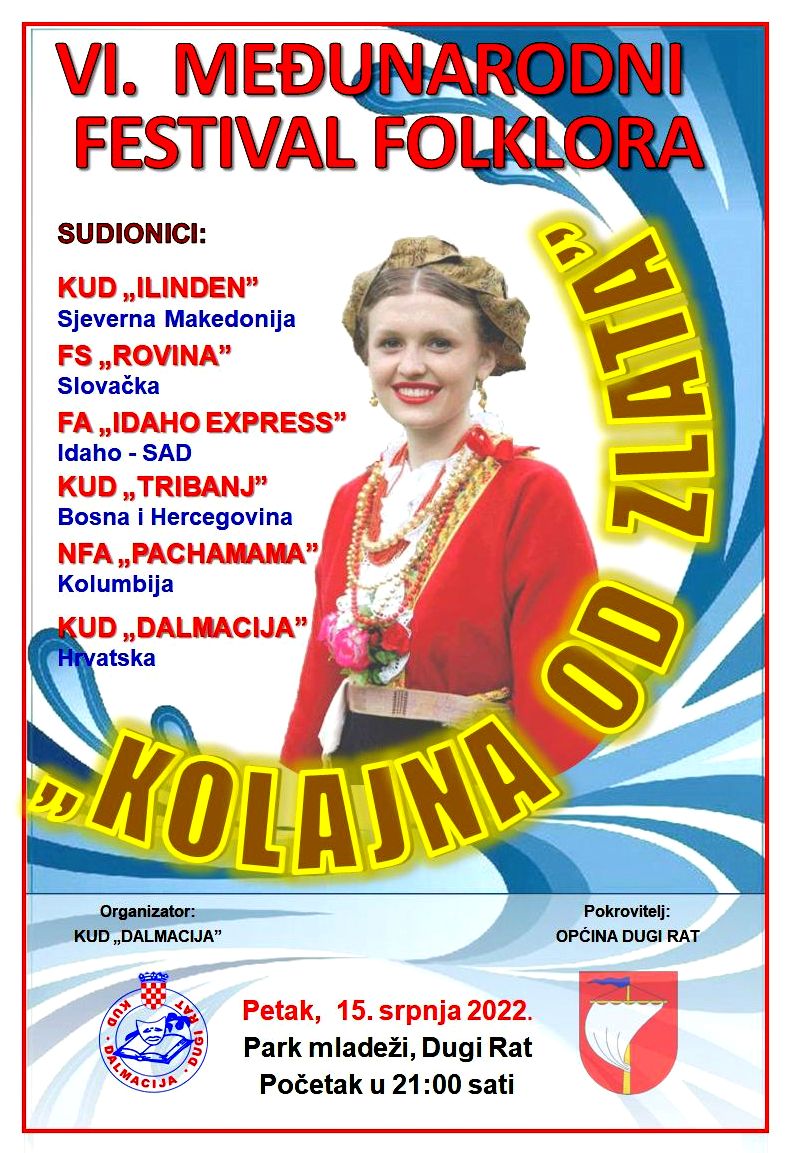
So far, folklore groups from Bosnia and Herzegovina, Slovenia, North Macedonia, Poland, Czech Republic, Slovakia, Romania, Lithuania, Serbia, France, Italy, Austria, Spain, Portugal, Russia, Canada, Hungary, and Ukraine have participated. During the past years, almost 2,000 performers from around 100 different folklore groups from 18 countries performed on the summer stages in Kaštela, Muć, Dugopolje, and Dugi Rat. This year, in the international part of the program, guests from Colombia, the United States of America, Slovakia, North Macedonia, and Bosnia and Herzegovina will show their skills in singing and performing traditional dances.
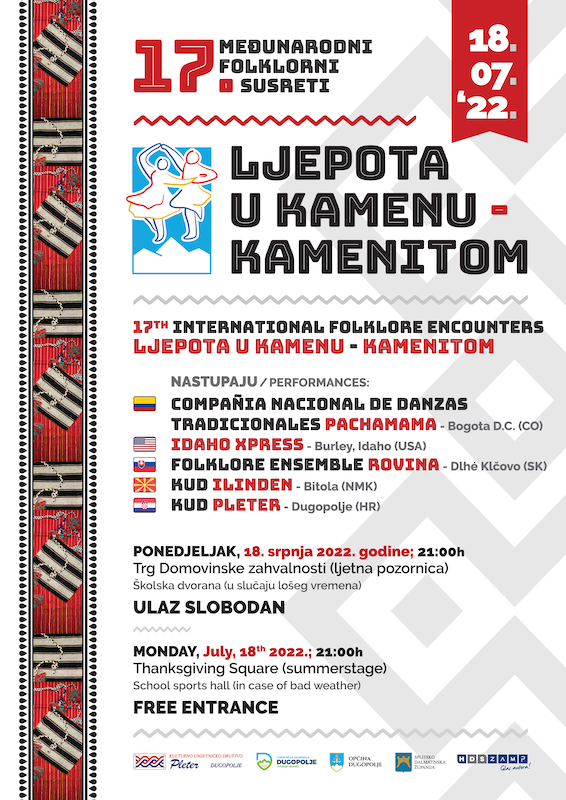
After a two-year hiatus, this now transcontinental folklore program will undoubtedly enrich the programs of cultural summers on the coast of our county and in Inland Dalmatia. The meeting is held in two coastal and two coastal towns in the county in four days.
Program:
Friday, July 15, Dugi Rat: 6th international meetings „Kolo, kolo, kolajna od zlata“
Saturday, July 16, Muć: 19th International Folklore Festival ˝Stara je skrinjja is open˝
Sunday, July 17, Kaštel Kambelovac: 20th international meeting ˝Za jubav tance igraše˝
Monday, July 18, Dugopolje: 17th International Folklore Meeting ˝Ljepota u kamenu kamenitom˝
Foreign folklore groups:
Compania Nacional de Danzas Tradicionales "Pachamama", Bogota, Colombia
Idaho Xpress, Burley, Idaho, USA
Folklore Ensemble "Rovina", Dlhe Klčovo, Slovakia
KUD "Ilinden", Bitola, North Macedonia
KUD "Tribanj Bila," Livno, Bosnia, and Herzegovina
In addition to the joint performances of folklore groups from Colombia, the USA, Slovakia, Bosnia and Herzegovina, and North Macedonia, every evening has its specialty, where local folklore societies will also perform. After two full years without the folklore "caravan" due to the COVID-19 pandemic, with the announcement of the International Folklore Meetings, all KUD hosts want to organize such meetings as a unique international folklore event in Split-Dalmatia County.
For more, check out our lifestyle section.
Varaždin Secures Croatian First League Promotion for 2022/23 Season
May 23, 2022 - Varaždin secures their Croatian First League promotion after beating Dugopolje 2:1 on Sunday!
One round before the end of the Croatian Second League (HNL), Varaždin secured their return to the highest rank of Croatian football. Thanks to a 2:1 victory against Dugopolje, Varaždin escaped second-placed Rudeš with unattainable four points with one round to go.
In a wonderful atmosphere in front of more than 5,000 fans, Varaždin took 3 points and secured their spot in the Croatian First League next season.
In the 15th minute, Varaždin took the lead thanks to a phenomenal goal scored by Itsuki Urata. The Japanese left-back received the ball and hit the bottom left corner from more than 30 meters out. It was a goal that will surely be included in the narrow competition for the best goal of this Second League this season.
The start of the second half saw Varaždin increase its advantage. Namely, in the 55th minute, Fran Brodić found the back of the net, who had previously missed four great opportunities in the match. Then, in the 66th minute, Urata made a mistake, and Ćubelić took advantage of his clumsiness to bring the score to 2:1.
Dugopolje did not give up, but several changes led to a drop in the game's intensity. Before the end of the match, Varaždin again had two great opportunities in the 83rd and 88th minutes, and the ball moved from one end of the penalty area to the other, and no one managed to shoot on target.
At the end of the match, excited fans rushed onto the pitch and celebrated with Varaždin for winning the Second HNL title and promotion to the First HNL.
Dugopolje will fight for its status in the Second League until the very end. Namely, five clubs are dropping out of the Second HNL since the league will be reduced to 12 clubs next season, and there will undoubtedly be other Dinamo and Osijek teams included. Furthermore, it is already known that Sesvete and Opatija will be relegated, and we will find out the remaining passengers for the Third HNL on Saturday, May 28, when the last round is scheduled.
Source: Gol.hr
To read more about sports in Croatia, follow TCN’s dedicated page.
EU Funded Dugopolje Rehabilitation Centre Project Presented
April the 29th, 2022 - The conceptual design of the Dugopolje rehabilitation centre project, which will be funded by the European Union (EU), has been presented.
As Poslovni Dnevnik/Borivoje Dokler writes, the Split Angels Association, in cooperation with Split-Dalmatia County, organised a presentation of the conceptual design of the Dugopolje rehabilitation centre at the Park Hotel in Split. In the centre, which would span over 58,000 square metres, children and adults with disabilities would come for treatment. There will be educational and rehabilitation workshops, sensory rooms, recreation halls, indoor and outdoor swimming pools, as well as a therapy area with horses, dogs and vegetable gardens. The Dugopolje rehabilitation centre would be the largest of its kind in Croatia's entire immediate region.
"After twelve years, we finally came to the presentation of the conceptual design of a large Dugopolje rehabilitation centre. We'd like to mention that this a centre for all children and people with disabilities, as well as all those who find themselves in need of rehabilitation at some point in their lives. The development of the conceptual design was financed by Split-Dalmatia County, and now it is up to the government to declare it a project of national importance, in order to apply for EU tenders and finally provide funds for the construction of this oasis,'' said Anka Djikic from the Angels Association who was the one to initiate the entire project.
Neighbouring Slovenia already has four such centres
The president of the association, Dijana Anicic, added that neighbouring Slovenia, which is smaller geographically than Croatia, already has four such rehabilitation centres, and Croatia doesn't have one.
"In this country, there is no systematic care and integration for children and people with disabilities. They can get help through associations or in private institutions, but not in one place. Let's make that history. Such individuals have the right to a dignified existence, and even a dignified departure, if it comes to that,'' concluded Dijana Anicic.
For more, make sure to check out Made in Croatia.
Easter Holidays: An Ideal Time Time to Visit Vranjača Cave in Inland Dalmatia
April 15, 2022 - The Easter holidays are approaching, the weather is getting warmer and more pleasant for outdoor trips, and the Vranjača cave in the Kotlenice settlement of the Dugopolje Municipality has opened its doors to visitors!
This natural pearl of Inland Dalmatia is located in the central part of the Mosor mountain, on its northern side, only half an hour drive from the city of Split and only ten minutes away from Dugopolje, the highway exit to Split.
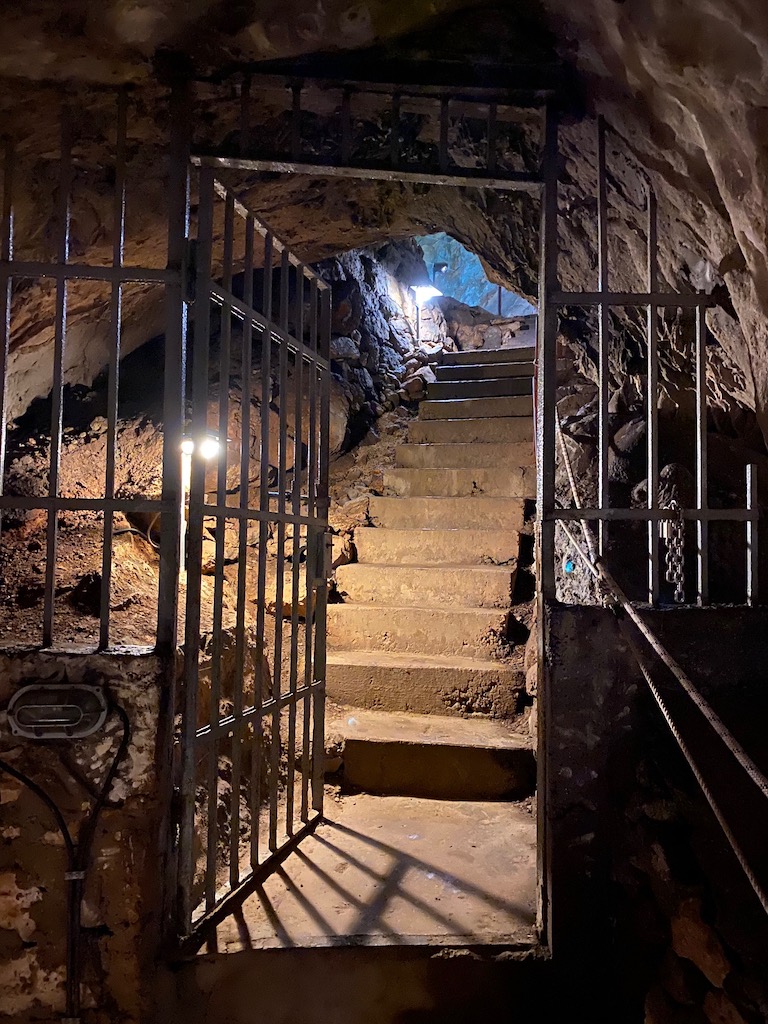
The cave consists of two parts, the first entrance without cave decorations and the second, full of stalactites and stalagmites, discovered in 1903.
Due to its uniqueness and rich cave pillars and arcades, Vranjača was declared a protected geomorphological monument of nature in 1963 and was first opened to tourists back in 1929, when electric lighting was introduced. The unique feature of the cave is the constant temperature of 15 degrees Celsius, which can be attributed to its depth of as much as 107 meters.
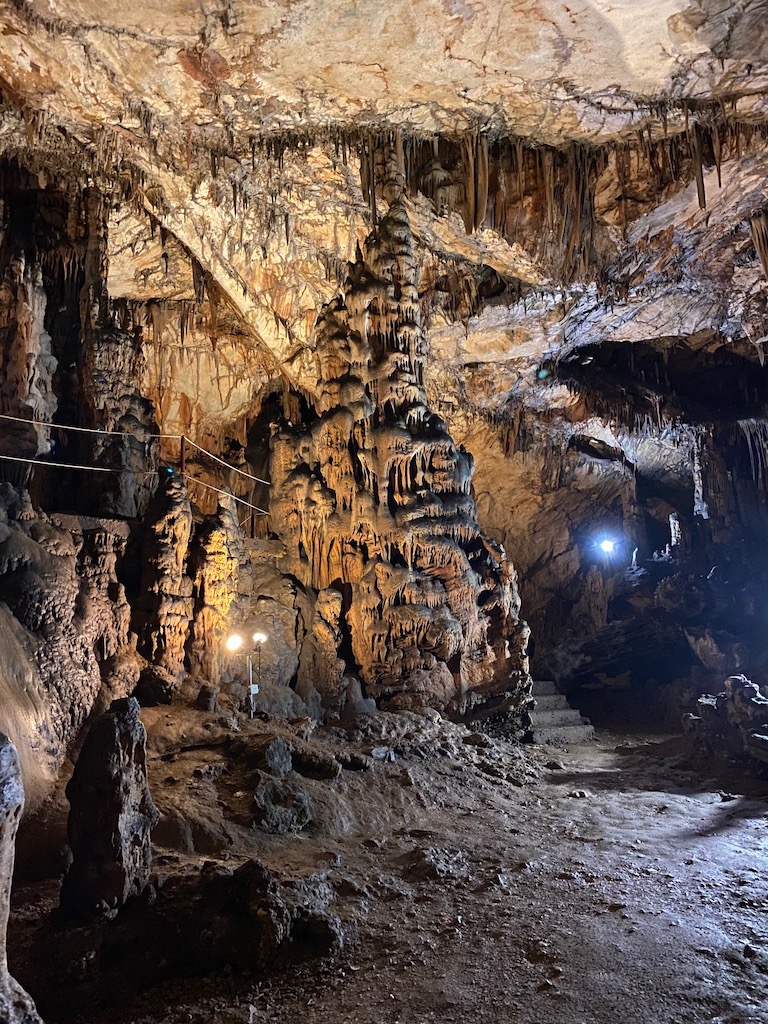
Organizing visits to the cave, protecting, and caring for the cave is done by the Punda family from Kotlenice. All visit lasts about an hour, and ticket prices are 50 kuna for adults and 25 kuna for children under 12 years. The cave is open every day from 10 am to 6 pm, and the last entrance to the cave is at 5 pm.
Along the county road Dugopolje-Kotlenice-Dolac Donji there is a tourist sign for the cave, and on the plateau above the cave, there is a parking lot and a rest area with benches and tables, making it a foolproof spring outing in nature.

The natural pearl of the Mosor mountain is now open to visitors, so why not take advantage of this pleasant spring weather to dive into one of Croatia's most unique geomorphological natural monuments?
For more on travel to Croatia and Inland Dalmatia, check out our dedicated travel section.
Dugopolje Croatian Cream Made From Grandma's Recipe Proves Hit
January the 23rd, 2022 - Croatian cream from Dugopolje, close to Split in the Dalmatian hinterland, has been winning over hearts (and skin) for half a century now, and the recipe has been passed down from generation to generation of this family.
As Poslovni Dnevnik/Slavica Vukovic/VL writes, Zora's ointment (Zorina mast), a natural Croatian cream for the treatment of burns and various other skin problems, has gained in fame for 50 years now, having been made by 84-year-old Zora Cipcic from Dugopolje. People came from across the country to Dugopolje because of Zora's healing ointment, and she made it according to a recipe that has been passed down through her family.
However, as the years went by, she gradually stopped making this much loved Croatian cream because her health no longer allowed for what was involved in its creation, but her 23-year-old grandson, Goran Cipcic, made sure that her beloved old recipe did not fall into oblivion. Two years ago, as a student, he founded a startup and won the Start Croatia competition, Zora's ointment was declared a hit and he fought for its place on the shelves of the likes of Spar and Interspar.
This much loved Croatian cream made using an old family recipe has obviously helped very many people, thousands of comments from satisfied users have been recorded on social media, and as a good name is heard far and wide, it has opened the door to other stores for young Goran. Not only that, he has also expanded the range, and since last September he has been offering a very similar Croatian cream for hands under the Zorina mast brand, and in mid-February this year, a new, unique face cream will be on the shelves.
“We designed Zorina Mediterranea face cream, which is completely different from everything else on the market. It's completely natural, it has most of the ingredients Zorina mast has in it, but it's additionally enriched with magnesium, salt flower and some seaweed. It lasts for more than 12 hours on the skin, strongly moisturises and deeply hydrates it, and it also improves the skin's elasticity and firmness. It will be on sale in about a month,'' Cipcic proudly announced.
These Croatian creams are more suitable for application on the face and hands because they are easily and quickly absorbed. "Given that Zorina mast is a brand of natural cosmetics and helps with many types of skin problems that people often face, we first expanded the range to include hand cream. Why did we do that? Well, ever since the novel coronavirus appeared, people have treated their hands extremely harshly with disinfectants, many of which irritate, damage and dry out the skin. We went it because our hand cream repairs damaged skin and protects it. All the ointment ingredients are also in this Croatian cream, but we've supplemented them more. One of the key ingredients is probiotics, which create an additional protective layer for the skin. That's how we connected Zora's traditional recipe with modern trends,'' explained Goran.
We do make cosmetics, but we didn't really focus on dermocosmetics, but instead on what helps the skin to be healthy, and thus beautiful and youthful,'' added Goran, revealing what makes this Croatian cream and the rest of the range unique.
“We're the only ones in production who boil a part of the substance used, thus avoiding the addition of other raw materials. It’s that recipe that I got from my grandma. Everything she did, I do too, only what was a litre to her, I have 15 litres, there are machines, nothing is industrial, we do everything by hand. My goal is not to grow enormous production, but to continue in the traditional way. That gives our products a soul,'' added Goran.
He makes this special Croatian cream and his sister helps him. Since he is an economist, he develops the recipes in collaboration with, he says, the formulator of natural cosmetics.
“I tell her what I want and she advises me on how best I might achieve it. We're already preparing some new products, the first will be a face serum,'' concluded Goran Cipcic.
For more, check out Made in Croatia.
Dugopolje Municipality Tackling Demography Issue with Higher "Newborn Sums"
July the 22nd, 2021 - The Dugopolje Municipality near Split has decided to raise the cash sum it gives to new parents in an attempt to encourage the birth of more children in the area.
Croatia's demographic crisis didn't come about with the coronavirus pandemic, which has seen many people take the plunge and head abroad in search of more stability following lockdowns and restrictions within the tourism industry, on which many jobs rely. It wasn't even new when the country finally joined the European Union back in July 2013 and when borders opened for the Croatian labour force.
Waves of emigration are very common for Croatia, with a huge number of people leaving during the 70s, 80s and 90s, typically, at least back then, for political reasons. Now, while politics certainly continues to play a significant role, it isn't the only deciding factor for most. The desire for a country with more economic stability, less red tape and a more forgiving system is what drives most people outside of Croatian borders, and the demographic crisis didn't even wane when travel restrictions were harsher last year, with many Croats still leaving to the likes of Ireland and Germany without looking back.
While the typically overlooked region of Eastern Croatia has always been dominant in this trend, with villages and towns emptying out at a worrying rate, the demographic crisis has spread further, with even ''richer'' areas where jobs were usually far easier to come by such as Dalmatia seeing people hop on planes and coaches with one way tickets. The Dugopolje Municipality has, as a result, opted to up the cash fee given to parents for each child born in the area.
As Poslovni Dnevnik writes, Perica Bosancic, the mayor of Dugopolje, a municipality with about 3,500 inhabitants close to Solin (formerly Salona) took to Facebook to post about the increase in fees for newborn children in the Dugopolje Municipality.
As he wrote, the fee for the first born child will be 5,000 kuna, instead of the previous 3,000 kuna, and for the second 10,000 kuna instead of the previous 5,000 kuna.
''We announced this back on the 18th of April, and on July 20th, we kept our promise. We increased the benefits for newborns from 3,000 kuna to 5,000 kuna for the first child, from 5,000 kuna to 10,000 kuna for the second, and for the third, we increased the benefit to 15,000 kuna. Each subsequent child will see the parents paid an additional 15,000 kuna (meaning that the fourth child is is 30,000 kuna, the fifth is 45,000 kuna, etc.…). I'd like to thank the councilors for unanimously supporting this proposal,'' Bosancic wrote on Facebook.
For more, follow our lifestyle section.
Ancient Iron Mine in Dugopolje Discovered (VIDEO)
May 3, 2021 - An ancient iron mine in Dugopolje has been discovered near the settlement of Kotlenice!
At the foot of the Mali Mosor hill near the settlement of Kotlenice (Dugopolje municipality), there is an underground mine in which iron was mined during the Austro-Hungarian Empire. It was likely mined for the needs of the Roman legion in Trilj's Tirulija, reports Dalmacija Danas.
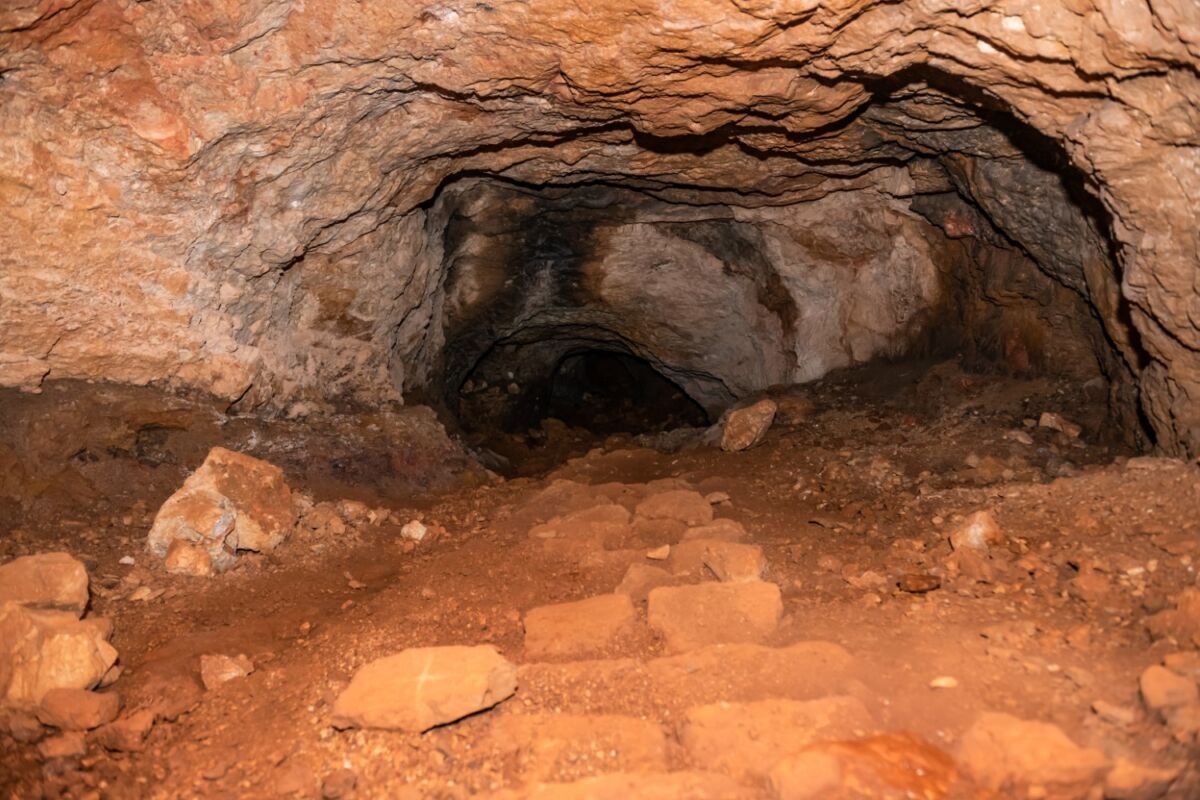
Saša Sapa Stojanović
However, as the Romans forcibly occupied these areas, it is assumed that they took it from the Illyrians.
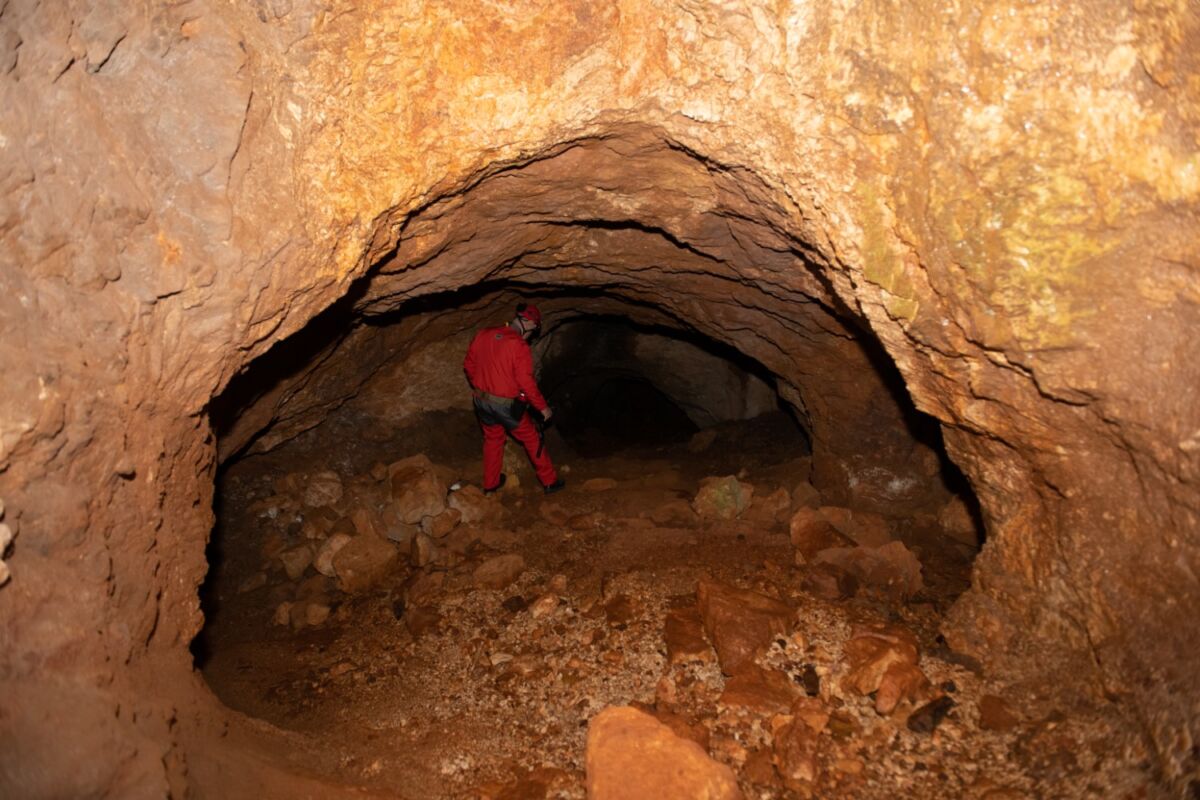
Saša Sapa Stojanović
The history of this mine is increased by three entrances and dozens of trenches. The lowest point of the mine is about 35 meters below ground level and branches almost a kilometer in all its directions.
"We urge you not to enter the mine without equipment or expert guidance due to the danger of getting lost or injured by the collapse of fragile material," says the author of the video "Ancient mine - secrets of the underground labyrinth in Kotelnice," Jurica Galić Juka.
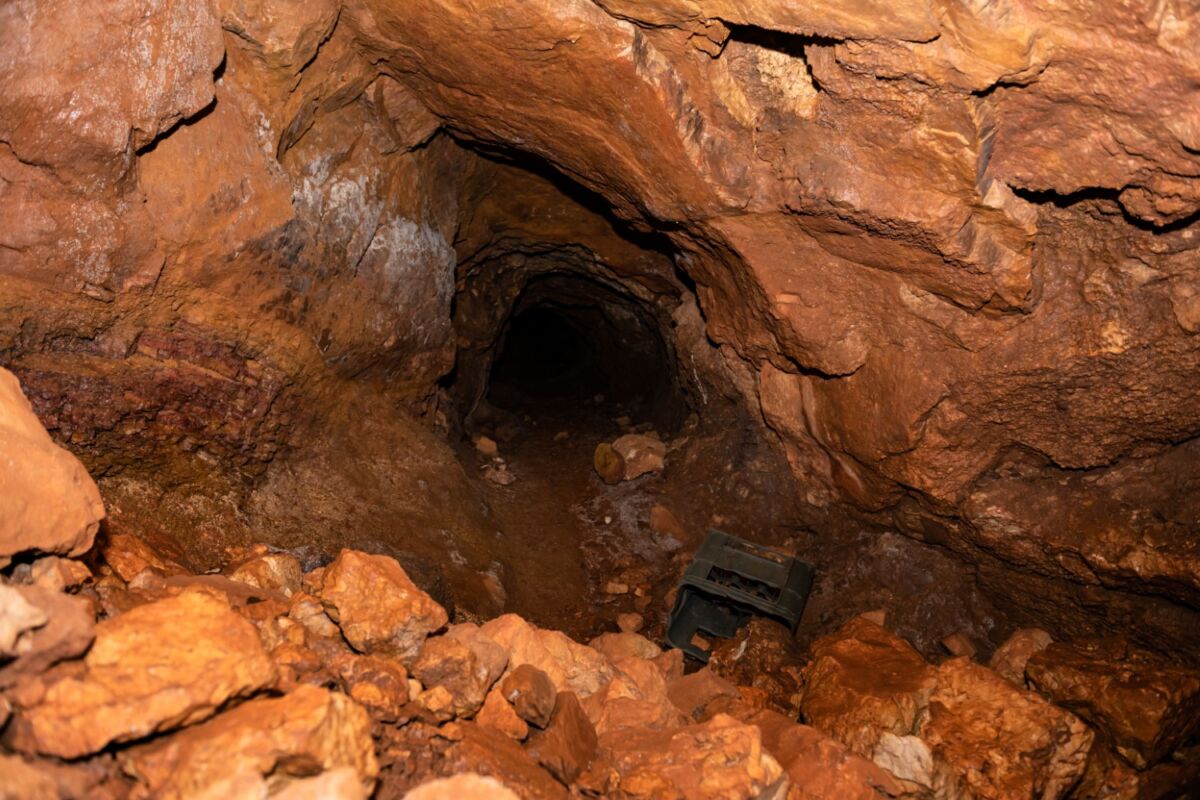
Saša Sapa Stojanović
At the end of this instructive and interesting video, speleologists gave a great example of how to protect the heritage of their homeland. Namely, the truck tire thrown into the mine was taken to the surface and then deposited in a container.
For more about lifestyle in Croatia, follow TCN's dedicated page.
From Trogir to Podstrana, Split to Dicmo: Public Bicycle System to Connect Urban Agglomeration of Split
October 17, 2020 - The cities and the municipalities that make up the urban agglomeration of Split will soon be connected by a public bicycle system.
The project for the development of public bicycle systems in the Urban Agglomeration of Split plans to further popularize the use of bicycles as an alternative form of public transport in the UAS, by developing and improving the cycling infrastructure network that will enable faster access to public transport stops, but also serve as an upgrade and supplementing the existing form of public transport on the daily routes of the inhabitants of the urban agglomeration.
The project is called "Choose a bicycle!", which was applied for co-financing with European Union funds within the ITU Call "URBAN MOBILITY - Development of public bicycle systems in the Urban Agglomeration of Split."
As part of the activities of this integrated project, the City of Split and 7 partners - cities and municipalities from the Urban Agglomeration of Split (Solin, Trogir, Kaštela, Podstrana, Klis, Dugopolje and Dicmo), will receive 41 new stations with a mixed contingent of 242 bicycles and two bicycle roads will be established - in Split (in the area of Trstenik Bay) and Trogir (in the area of Brig-Lokvica). Through project activities, an analytical basis will be prepared - a document for establishing an integrated system of bicycle roads in the Urban Agglomeration of Split, which will be the basis for establishing a planned integrated system of bicycle roads in the Urban Agglomeration of Split.
These 41 new locations with bicycle terminals will be distributed in eight local self-government units per the analysis of needs and possibilities for the implementation of the system, as follows:
City of Split: 16 terminals with 50 electric and 20 classic bicycles;
City of Solin: 6 terminals with 12 electric and 26 classic bicycles;
City of Trogir: 3 terminals with 10 electric and 10 classic bicycles;
City of Kastela: 6 terminals with 30 electric and 30 classic bicycles;
Municipality of Podstrana: 2 terminals with 6 electric and 6 classic bicycles;
Municipality of Klis: 2 terminals with 4 electric and 8 classic bicycles;
Municipality of Dugopolje: 4 terminals with 10 electric and 10 classic bicycles;
Municipality of Dicmo: 2 terminals with 4 electric and 6 classic bicycles.
The project's total value is HRK 13,609,435.83, of which the grant amounts to a total of HRK 10,893,396.68. It is planned that the activities for implementing the public bicycle system will be carried out by June 2021, and the construction and marking of bicycle roads by mid-2022. The project application was prepared by the Development Agency Split - RaST d.o.o., with the support of the Service for International and EU Projects of the City of Split.
For the latest travel info, bookmark our main travel info article, which is updated daily.
Read the Croatian Travel Update in your language - now available in 24 languages.
VIDEO: Vranjaca Cave Reopens to Public
June 6, 2020 - Good news for Inland Dalmatia - Vranjaca Cave is open again!
A gem of the Dalmatian hinterland since it first opened to the public in 1929, the Vranjaca Cave has officially reopened for all tourists, caving enthusiasts, and nature lovers to see.
Just 30 minutes from Split and only 10 minutes away from Dugopolje by car, the easily accessible Vranjaca Cave is situated in the heart of Inland Dalmatia, in the village of Kotlenice.
The cave is located at the foot of the central part of the Mosor mountain, on its north-facing slope, and consists of two parts. The entrance has been known to locals since ancient times, while the other part was discovered in 1903 by Stipe Punda, the owner of the land where the cave is located.
A small natural passage leads from the entrance chamber to a chamber composed of 9 smaller parts full of cave decorations in all shapes, sizes and colors. A specific feature of the cave is that its interior maintains a constant year-round temperature of about 15⁰C. Full of stalactites and stalagmites, pillars and arcades, Vranjaca is a true pearl of the karst landscape that was declared a protected geomorphological natural monument in 1963.
Check out a video of Vranjaca Cave by the Dugopolje Tourist Board below:
Today, the Punda family from Kotlenice manages the organization of visits to the Vranjaca cave and is responsible for all maintenance.
If you're interested in exploring this masterpiece of nature, contact Marko Punda at +385 (0)98 749 000. Ticket Prices for adults are HRK 50.00, and children HRK 25.00. Vranjaca Cave is open throughout the year, from 9 am to 7 pm, and the last tour enters the cave one hour before the end of the opening hours!
To read more about Inland Dalmatia, follow TCN's dedicated page.


